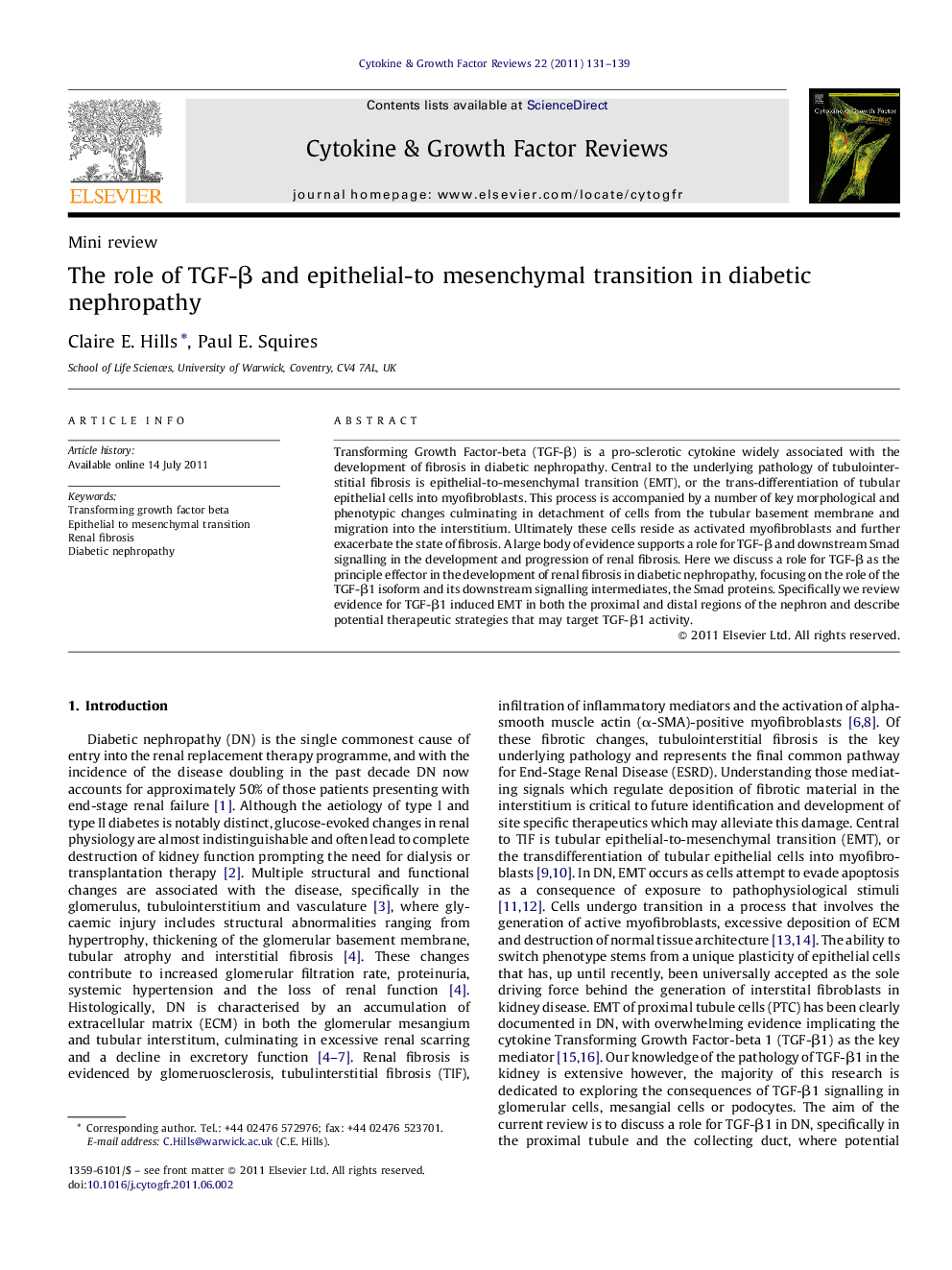| کد مقاله | کد نشریه | سال انتشار | مقاله انگلیسی | نسخه تمام متن |
|---|---|---|---|---|
| 2170607 | 1093390 | 2011 | 9 صفحه PDF | دانلود رایگان |

Transforming Growth Factor-beta (TGF-β) is a pro-sclerotic cytokine widely associated with the development of fibrosis in diabetic nephropathy. Central to the underlying pathology of tubulointerstitial fibrosis is epithelial-to-mesenchymal transition (EMT), or the trans-differentiation of tubular epithelial cells into myofibroblasts. This process is accompanied by a number of key morphological and phenotypic changes culminating in detachment of cells from the tubular basement membrane and migration into the interstitium. Ultimately these cells reside as activated myofibroblasts and further exacerbate the state of fibrosis. A large body of evidence supports a role for TGF-β and downstream Smad signalling in the development and progression of renal fibrosis. Here we discuss a role for TGF-β as the principle effector in the development of renal fibrosis in diabetic nephropathy, focusing on the role of the TGF-β1 isoform and its downstream signalling intermediates, the Smad proteins. Specifically we review evidence for TGF-β1 induced EMT in both the proximal and distal regions of the nephron and describe potential therapeutic strategies that may target TGF-β1 activity.
Journal: Cytokine & Growth Factor Reviews - Volume 22, Issue 3, June 2011, Pages 131–139